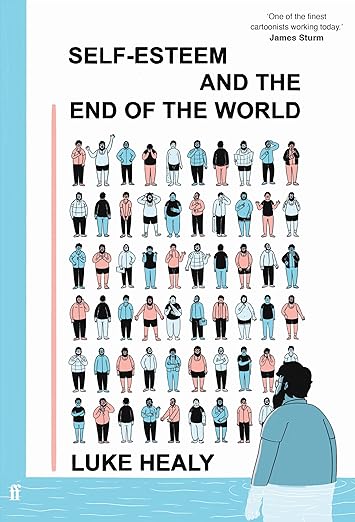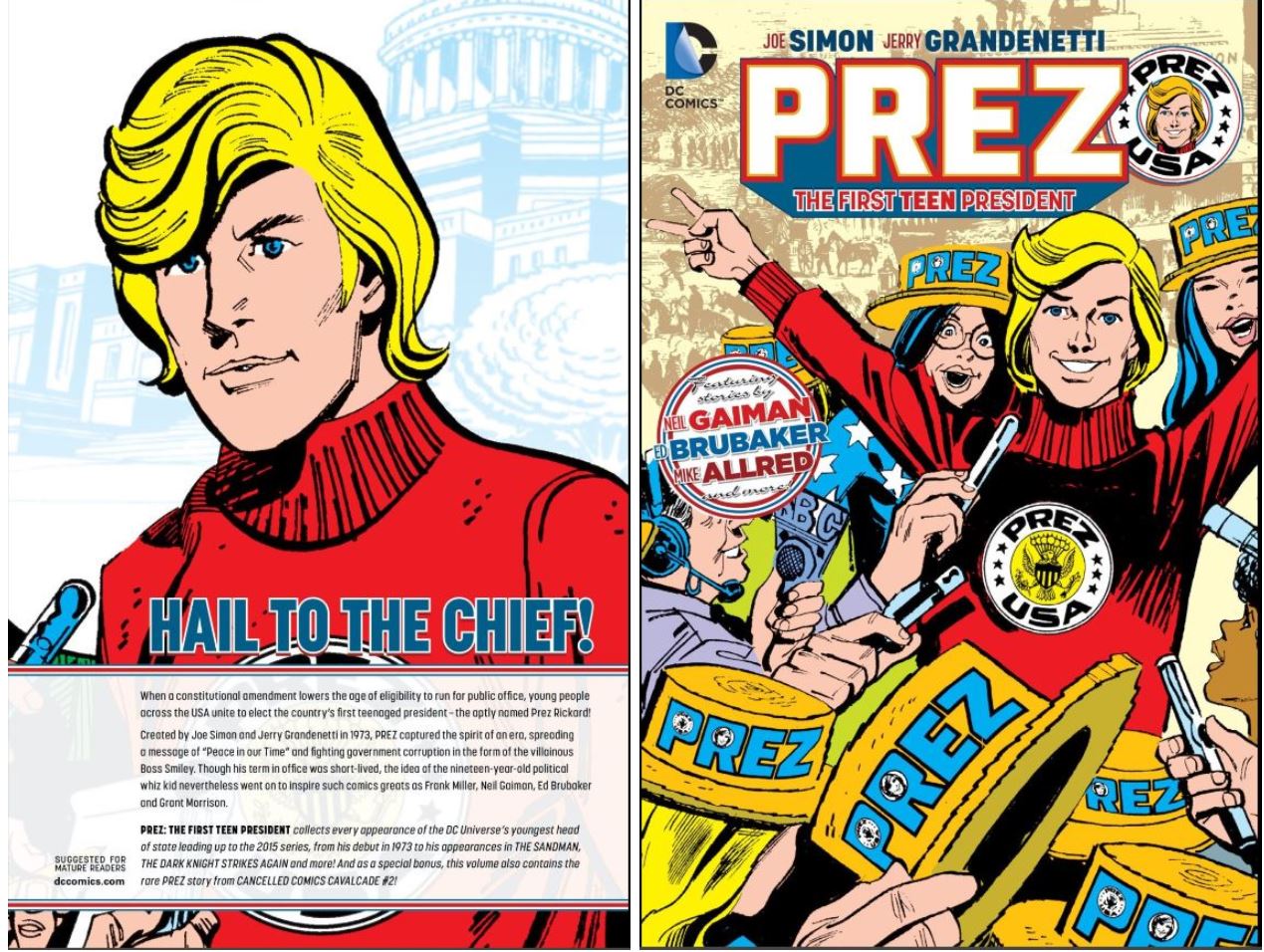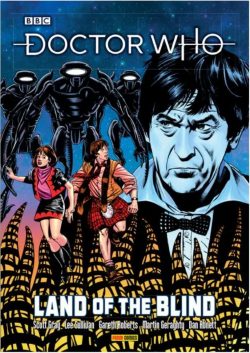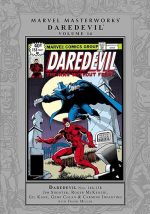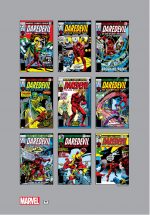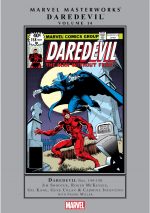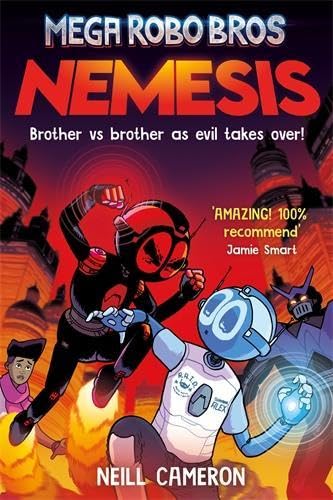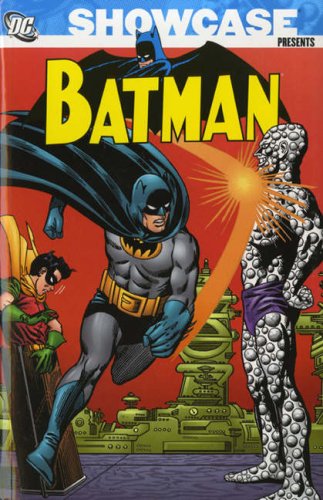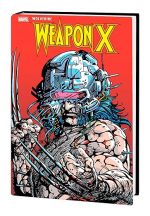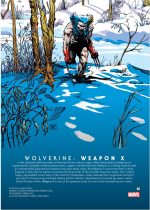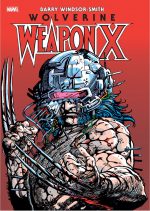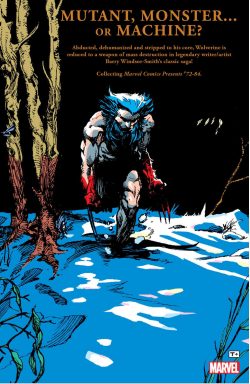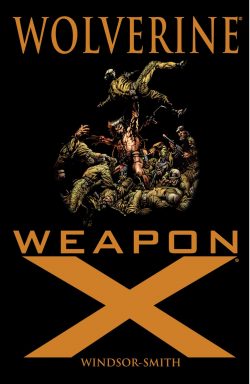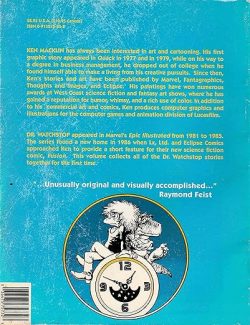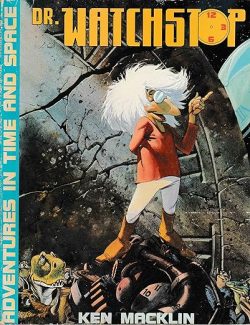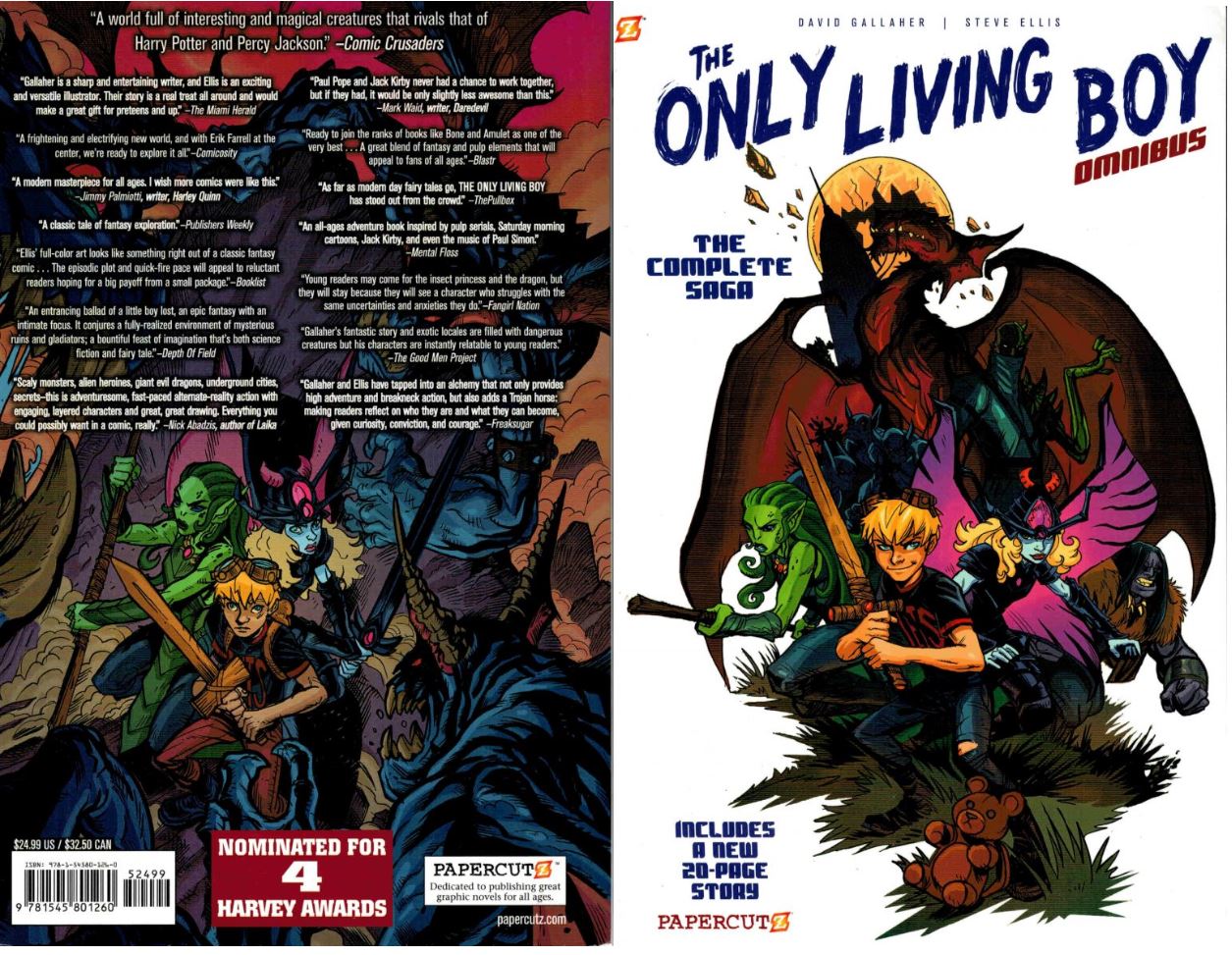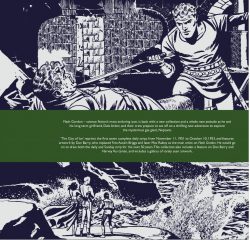
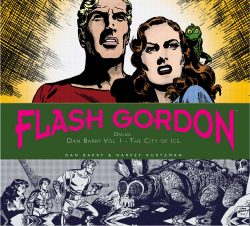
By Dan Barry & Harvey Kurtzman with Frank Frazetta, Harry Harrison & various (Titan Comics)
ISBN: 978-1-78276-683-4 (HB/Digital edition)
Happy 90th, space man!
By almost any metric Flash Gordon is the most influential comic strip of all time. When the husky hero debuted on Sunday January 7th 1934 (with the superb Jungle Jim running as a supplementary “topper” strip) he was an answer to revolutionary, inspirational, but clunky Buck Rogers strip ) by Philip Nolan & Dick Calkins – which also began on January 7th, albeit five years previously. Two new elements were added to the wonderment: Classical Lyricism and astonishing beauty.
Where Buck Rogers blended traditional adventure and high science concepts, Flash Gordon reinterpreted Fairy Tales, Heroic Epics and Mythology, spectacularly draping them in the trappings of a contemporary future, with varying “Rays”, “Engines’ and “Motors” as seen in pulps substituting for spells, swords and steeds. To be fair there were also plenty of those too – and exotic craft and contraptions standing in for Galleons, Chariots and Magic Carpets.
Most important of all, the sheer artistic expertise of Raymond, his compositional skills, fine line-work, eye for sumptuous detail and just plain genius for drawing beautiful people and things, swiftly made this the strip that all young artists swiped from.
When all-original comic books began two years later, dozens of talented kids weaned on the strip’s clean-lined, athletic Romanticism entered the field, their interpretations of Raymond’s mastery a ticket to future success in the field of adventure strips. Almost as many went with Milton Caniff’s expressionistic masterpiece Terry and the Pirates (and to see one of his better disciples check out Beyond Mars, illustrated by the wonderful Lee Elias).
For over a decade, sheer escapist magic in Ruritanian Neverlands blending Camelot, Oz and every fabled Elysium that promised paradise whilst concealing hidden vipers, ogres and demons, enthralled the entire world, all cloaked in a glimmering sheen of sleek art deco futurism. Worthy adversaries such as utterly evil, animally magnetic Ming, emperor of a fantastic wandering planet; myriad exotic races and fabulous conflicts offered a fantastic alternative to the drab and dangerous real world…
Alex Raymond’s ‘On the Planet Mongo’ – with journalist/editor magazine writer Don Moore (Jungle Jim and a long career in television scripting the likes of Captain Video, Rawhide, Sea Hunt and Death Valley Days) doing the bulk of the word stuff – ran every Sunday until 1944, when the illustrator enlisted in the Marines. On his return he would create gentleman detective Rip Kirby. The continuous, unmissable weekly appointment with sheer cosmic wonderment continued under the artistic auspices of Raymond’s assistant Austin Briggs – who had been drawing the daily instalments since 1940.
The Monday-to-Saturday monochrome feature ran from 1940 to 1944 when it was cancelled to allow Briggs to take on the Sunday page. Often regarded as the poor relation, the daily strip got an impressive reboot in 1951 when King Features, keenly aware of the burgeoning science fiction zeitgeist in the post-war world, revived it, asking Dan Barry to produce the package. The Sunday was continued by Austin Briggs until 1948 when Mac Raboy assumed artistic control, beginning a 20-year resurgence of classicist elegance and sheer beauty. On Raboy’s death Barry added the Sunday to his workload… until he quit over a pay dispute in 1990.
A contemporary of Leonard Starr and Stan Drake, Dan Barry (1911-1997) began his career as a jobbing comic book artist. Like them and his own brother Seymour “Sy” Barry – who produced The Phantom newspaper strip for three decades – Dan worked in a finely-detailed, broadly realistic style, blending aesthetic sensibility with straightforward visual clarity and firm, almost burly virile toughness: a gritty “He-man” attitude for a new era, contemporarily christened “New York Slick”. He drew varied comic stars fare such as Airboy, Skywolf, Boy King, Black Owl, Spy Smasher and Doc Savage before joining the US Air Force and, on returning after the hostilities, limned monster hero The Heap and sundry genre shorts for new titles like Crimebusters and started his own outfit producing educational/informational comics.
Dan began his gradual withdrawal from funnybooks as early as 1947, assuming art chores on the Tarzan daily strip for a year, but was still gracing DC’s crime, mystery and science fiction anthologies as late as 1954. When he was offered Flash Gordon he quickly accepted, intending to write the feature himself. However, remuneration was meagre and he soon started looking for a scripter.
The (short term) solution was to hire arguably the most important cartoonist of the latter half of the last century, even more so than Jules Feiffer, Jack Kirby, Steve Ditko, Joe Kubert or Will Eisner. Harvey Kurtzman’s early triumphs in the fledgling field of comic books (Frontline Combat, Two-Fisted Tales and especially groundbreaking, game-changing Mad) would be enough for most creators to lean back on, but he was also a force in young kids comics and newspaper strips (Hey Look!, Silver Linings, Rusty) and a restless innovator, commentator and social critic who kept on looking at folk and their doings and just couldn’t stop making art or sharing his conclusions.
Kurtzman invented a whole new format when he converted extremely successful colour comic book Mad into a monochrome magazine, safely distancing the brilliant satirical publication from fallout caused by the 1950s comics witch-hunt that eventually killed all EC’s other titles. He then pursued comedy and social satire further in newsstand magazines Trump, Humbug and Help!, all the while creating challenging and powerfully effective, culturally challenging humour strips like Jungle Book, Little Annie Fanny (in Playboy), Nutz, Goodman Beaver, Betsy’s Buddies and so much more.
The story of how cartoon genius Kurtzman came aboard and what happened next is covered in preliminary article ‘Flash Gordon vs the Reluctant Collaborators of Manhattan Isle’, as first written by Dave Schreiner in 1988 for the Kitchen Sink compilation Flash Gordon: Complete Daily Strips – 19th November 1951- 20th April 1953. The feature section also offers a wealth of Kurtzman’s rough-pencilled script layouts, ancillary sketches and a large sampling of ghosted pencils from young Frank Frazetta. There’s even a brief glimpse of Flash spoofs from other magazines (if you’re interested, they include ‘Flesh Garden’ by Wally Wood from Mad #11 (May 1954), ‘Flyashi Gordonovitch’ (Jack Davis, Humbug #10, June 1958) and ‘Little Annie Fanny’ (Playboy 1962, Will Elder). For more, you’ll need to see the utterly effervescent Kitchen Sink iteration, and you should because it’s great too…
This monochrome tome reprints all Barry’s episodes and Kurtzman’s entire run (until his departure with the 20th April episode) before thundering on with non-stop space opera under other scripters’ aegis. Later story collaborators included writers Harry Harrison and Julian May, but we’re not certain who immediately took over – it might well have been Barry again until he found someone to handle what he considered the least rewarding part of the process.
Art assistants were commonplace with Frazetta pitching in during 1953’s Mr Murlin sequence and are early glimpses of Dan’s old Hillman Publications associates Bob Fujitani (The Hangman, Crime Does Not Pay, Prince Valiant, Dr. Solar, Man of the Atom) and Fred Kida (Airboy, Valkyrie, The Spirit, Steve Canyon, Captain Britain, Amazing Spider-Man newspaper strip) who joined early and continued on Flash Gordon intermittently for decades thereafter. Preceded by introductory recap ‘The Story Thus Far’ and series listing ‘The Dan Barry Flash Gordon Checklist Part One (1951-1958)’, and biographical features on the major contributors, the wide black yonder wonderment then takes off.
The new Flash Gordon daily debuted on 19th November 1951 with the beloved baroque regalia and fanciful scenarios of Mongo and its universe shelved in favour of grittier, harder-edged contemporary-toned pulp fiction atmosphere and trappings. In ‘Space Prison’ (11/19/1951 to 2/16/1952), in the near future (the imminent end of the 20th century in fact) astronaut Flash Gordon blasts off into space: part of Expedition X-3 to Jupiter. However, technical trouble forces the rocket to stop at the Space Prison Station. Docked for repairs, his crew – especially female member Dale – inadvertently trigger a riot. Soon ruthless hopeless convicts take a once-in-a-lifetime opportunity to escape the space rock…
Terse and gripping, the two-fisted yarn rockets along with Flash, Dale and their valiant explorer comrades fighting for their lives as rapacious head thug Big Moe orchestrates a ruthless double cross which only fails when one of the rioters rebels… someone who would eventually join them on their voyage to the gas giant and beyond.
Stories were only seldom titled to herald the forthcoming adventure, so here what was previously billed as ‘Man Against Jupiter!’ is retitled ‘The City of Ice. With iconoclastically fresh tone and milieu firmly established, the real adventure began on Monday, February 25th 1952 (with Kurtzman’s first scripts appearing in April). The crew orbiting the colossal mystery globe again experience terrifying malfunctions and their atomic powered ship “Planet Pioneer” heads to nearby moon Ganymede to effect repairs. On landing, the voyagers discover a subterranean civilisation within the icy satellite – and a young Earth boy.
Ray Carson is the son of a lost lunar scientist and his presence halfway across the solar system is but one of the baffling mysteries challenging Flash and Dale as they battle alien madmen and malicious monsters in the eponymous hidden frozen metropolis. Of course, the real threat is wilful, voluptuous Queen Marla who had originally abducted Ray and his dad…
Via teleport technology, she latterly dispatched the missing scientist to another star-system to search for an element vital to Ganymedan survival, but when geophysical upheaval and a takeover attempt by sadistic usurping Prince Garl tear the city apart Flash, Dale, Ray and Marla can only escape by following the missing savant into an unknown universe…
Concluding on 14th June, it was followed by a fuller return to traditional fantasy element as ‘The Butterfly Men’ (16/6 – 9/8/1952) saw many old accoutrements of the classic strip reappear: lost civilizations, monsters, arena duels – and with this new sequence the creators brought back more fantasy elements as the survivors explore a new world whilst hunting Dale, who has been lost in transit. After an intriguingly offbeat encounter with cruelly wronged but vengeful winged aliens and a gruelling ocean odyssey, the sage segues into diabolical continuation ‘Tartarus’ (11/8 – 18/10/1952) as Flash, Marla and Ray are found by a feudal race of horned, tailed, cloven-hoofed warriors in their devil city… Happily, they also encounter a long lost old friend making relatively primitive Earth weapons for the horn-headed natives as they strive to overthrow a tyrannical warlord and gain independence…
Wherever Flash goes, war and revolution seem to follow, but once the devil-men have settled their differences, Flash, Ray and Marla (who has besotted and beguiled surviving Planet Pioneer crewman Bill Kent) resume the search for Dale, stumbling into bizarrely advanced city Pasturia, ruled by devious masters of the mind. These savants hide behind a wall of deception and test the mettle of the visitors in ‘The Awful Forest’ (20/10 to 30/12/1952). When spoiled, greedy Marla typically exploits their technology for her own gain, a potential golden age for humankind is squandered away, but her meddling does bring Flash – still searching for Dale – into contact with a legendary Earth wizard. The voyagers learn that this astronomically distant world is the retirement home of ‘Mr Murlin’ (31/12/1952 – 20/4/1953) before becoming involved in the mage’s desperate attempts to forestall his own long-foreseen murder. As an enticement, Murlin restores Dale to Flash and rescues Ray’s dad too…
The fugitive’s super technologies include a time-machine that proves bewilderingly complex but easily coopt-able by the bad guys. The romp opens with a rapid return to Earth, devolves into a chronal comedy-of-errors, a cruel killer spree and a catastrophic mass destruction event, all sparked by 29th century bandit Boss Punch seeking to escape the long arm of the law by “taking over” 900 years before his time…
This extended sequence rattles along with immense pace and spectacular action, much of it ghosted (which used to mean “crafted by an unattributed replacement”) by up-&-coming star Frank Frazetta, as Flash and his team strive to save the present and guarantee the future. The saga also acts as a formal full re-set for the next few years of the feature…
The first of those new stories offers abroad change of pace via ‘The Space Kids on Zoran’ (21/4/ to 24/10/1953) as Ray starts meeting children his own age and founds a club of boy pace enthusiasts determined to build their own rocket and travel into orbit. Soon the callous machinations of money-mad space industrialist J.B. Pennington and efforts of his cruelly-neglected son Cyril to belong jointly spark a stowaway crisis on a prototype “starliner”, catapulting them – and Flash’s trusty test crew of rocketeers – into another star system and galaxy.
The marooned humans’ struggle to survive is hindered and enhanced by the suspicion that one of their number is unwittingly able to call upon uncanny powers of the mind which manifest as randomly materialised wishes and daydreams: lost kingdoms, flying horses, flaming monsters, pirates and worst of all capable of dealing out death and destruction…
Gripping, alluring, stunningly well illustrated (did I mention that the incomparable Frank Frazetta pencilled a long sequence of incredible strips?) this lost treasure is pure graphic gold, presented on huge pages that perfectly display the virtuosity of all involved. Perfect, perfect comic strip wonderment. Please gods of space, bring it back and more besides!
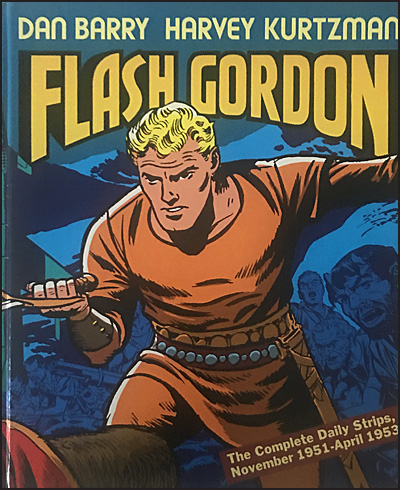
As I’ve constantly stated, most of the material here was first collected in 1988 by Kitchen Sink Press as Flash Gordon: Complete Daily Strips – 19th November 1951- 20th April 1953 in oversized (320 x 260mm) editions (ISBNs 978-0-87816-035-3/HB & 978-0-86801-969-7/TPB). There the focus solidly on the writer: more so than on the legendary character or the artists. If that’s not confusing enough for you, if you buy on Kindle, this book is retitled Flash Gordon Volume 5: The City of Ice. However, none of that should deter you from enjoying some of the most thrilling and endlessly enjoyable science fiction fun ever made…
Flash Gordon © 2016 King Features Inc. and ™ Hearst Holdings Inc. All Rights Reserved.
Flash Gordon vs. the Reluctant Collaborators of Manhattan Isle: Dave Schreiner. © 2016 used with permission of Lesleigh Luttrell. All rights reserved.
